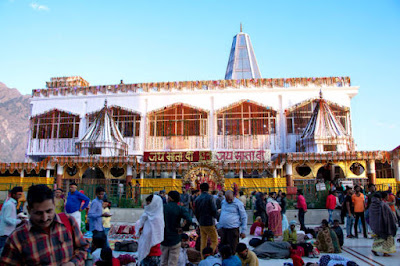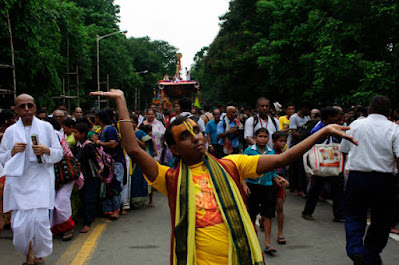Jatra and Yatra is a vernacular variant of the Sanskrit word yatra, which means "travel."
The term yatra is most often used to refer to travels to distant locations, while jatra refers to visits to locations within the immediate vicinity.
In Sanskrit, yatra signifies 'journey' or 'procession.'
Yatra is a pilgrimage to holy locations such as confluences of sacred rivers, sacred mountains, places linked with Hindu epics such as the Mahabharata and Ramayana, and other sacred destinations in numerous Indian-origin faiths such as Hinduism, Buddhism, Jainism, and Sikhism.
Pilgrims believe that visiting a holy site purifies them and brings them closer to the divine.
- The trip is as significant as the goal, and the difficulties of travel are an act of dedication in and of themselves.
- A tirtha-yatra is a pilgrimage to a holy spot that is usually done in a group.
Anyone who participates in the yatra is referred to as a yatri.
According to the Vedic Hindu Dharma Shastras, a Yatri should do padayatra, or pilgrimage on foot, preferably barefoot, as a type of tapasya in which the pilgrim should go without umbrellas or cars; nevertheless, many yatris do not observe these niyamas.
Yatras have become highly organized occurrences in recent years, with professional tourist organizations catering to yatris.
- State governments are sometimes engaged in organizing yearly yatras, assigning numbers, registering yatris, and controlling yatri traffic.
- The Hindu holy month of Shravan also marks the start of the annual Kanwar Yatra, a yearly journey by Shiva worshippers known as Kanwaria to Hindu pilgrimage sites in Uttarakhand such as Haridwar, Gaumukh, and Gangotri to get water from the Ganges River.
- Haridwar attracted 55 lakh (5.5 million) pilgrims in 2003.
- The Char Dham Yatra, which includes Badrinath, Kedarnath, Gangotri, and Yamunotri, and the Amarnath Yatra in Jammu and Kashmir are two other Tirtha pilgrimages.
- In India and worldwide, there are several pilgrimage sites.
The term Jatra also refers to a journey or a trip but has a different origin of usage derived from traditional Jatra performances.
The advent of Sri Chaitanya's Bhakti movement, where Chaitanya himself portrayed Rukmini in the performance of Rukmini Haran ("The kidnapping of the Charming Rukmini") from Krishna's life narrative, is often attributed with the genesis of jatra, which is essentially a musical theatre genre.
Another example of a yatra undertaken by modern day devotees is the Rukmini Yatra.
The concert, which took place in 1507 AD and lasted all night, is detailed in Chaitanya Bhagavata, Chaitanya's hagiography written by a disciple named Vrindavana Dasa Thakura.
Though there are evidences of the presence of a type of singing known as 'Carya', which was popular in Bengal between the 9th and 12th centuries and existed in Orissa at the same time as the famous 'Carya Padas' style.
Jatra performances are similar to Uttar Pradesh's Nautanki, Maharashtra's Tamasha, and Gujarat's Bhavai.
Though it originated in a religious setting abounding with diverse Bhakti Hinduism groups, it was superseded by morally didactic material towards the end of the 19th century, and finally became secular when it gained access into urban proscenium theatres during the Bengal Renaissance.
The Jatra form's longevity in a fast changing social environment, while catering to a diverse audience, has been attributed to its inherent malleability and ability to adapt to shifting social dynamics, keeping it not just current and alive, but also flourishing.
You may also want to read more about Hinduism here.
Be sure to check out my writings on religion here.








